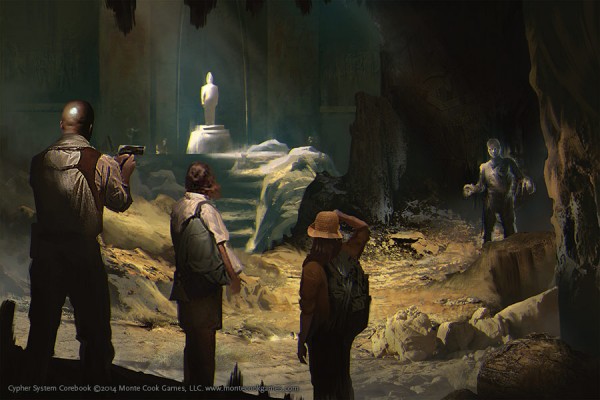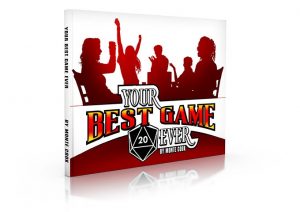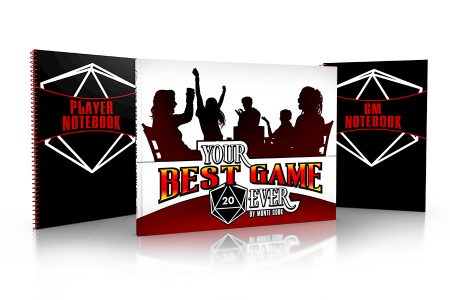This article is an excerpt from Your Best Game Ever, on preorder now and coming this summer!
Pacing Encounters and Sessions Together
One of the reasons that pacing within a session is so important is that you want every session to feel significant and important. You don’t want everyone walking away from the table saying, “Well, we didn’t really accomplish much tonight, did we?” That’s not satisfying.
So it’s your job to move things along. If the PCs are floundering looking for a secret cache in a room where there isn’t one, don’t let them waste an hour doing so. (Sometimes, players will get an idea stuck in their head and won’t let it go. This is called headcanon because they’ve decided the truth of the fictional world for themselves, rightly or wrongly.) Either bluntly tell them “You search and search and find nothing,” or put a secret cache there and come up with something useful or interesting to put inside it. Either solution will put an end to the time-wasting.
What this means, though, is that pacing within an encounter directly impacts the pacing of the session overall. You want a mix of minor encounters or scenes and a few major encounters or scenes in a session. If the PCs fumble around or drag their feet or suddenly go off in an unexpected and uninteresting direction, you need to keep the scene moving along or cut to the next one so the encounters after it can fit within the time left in the session.
Pacing problems aren’t always the players’ fault, either. If the goal of the session is to get the needed parts for the ship’s hyperdrive so the PCs can deliver a vaccine to a plague-ridden world, don’t introduce a pirate ship that attacks them and make them spend most of the session fighting that battle. That might be fun, but you’re keeping the story from going where it needs to go.

Likewise, don’t introduce a long-winded NPC if the players don’t feel like talking and they want to get to an action scene. The pacing should serve the players’ needs and wishes as well as yours. Read the room, and if the players are clearly bored with a scene or want to have a different kind of encounter, wrap it up and move along to something they’ll enjoy more. Players will appreciate you simply saying that they search the rest of the house and find nothing rather than slogging through all the searching skill checks in each room, ultimately finding nothing.
For a GM, the biggest pitfalls in pacing are introducing too many challenges, which make the matter at hand take far too long, or introducing too few challenges, so things are resolved quickly and you’re unexpectedly left with an hour at the end of the session. The solution to too many challenges is being willing to intrude on the action and wrap up a scene that’s taking far too long with some other event or just fast-forwarding to the end. The solution to too few challenges is to have a couple of extra encounters—even just light-hearted things that might normally be parts of side plots—ready to fill in any gaps that arise.
Managing the pacing within a session is a skill that you’ll develop over time, simply through experience.

Preorder Bundle
Get the GM Notebook and Player Notebook in a special preorder bundle deal! Both notebooks are system-agnostic, spiral bound, beautiful, and amazingly useful at the game table and between sessions.
Normally $19.99 each, preorder them in a bundle with Your Best Game Ever and get all three for a $10 savings!

